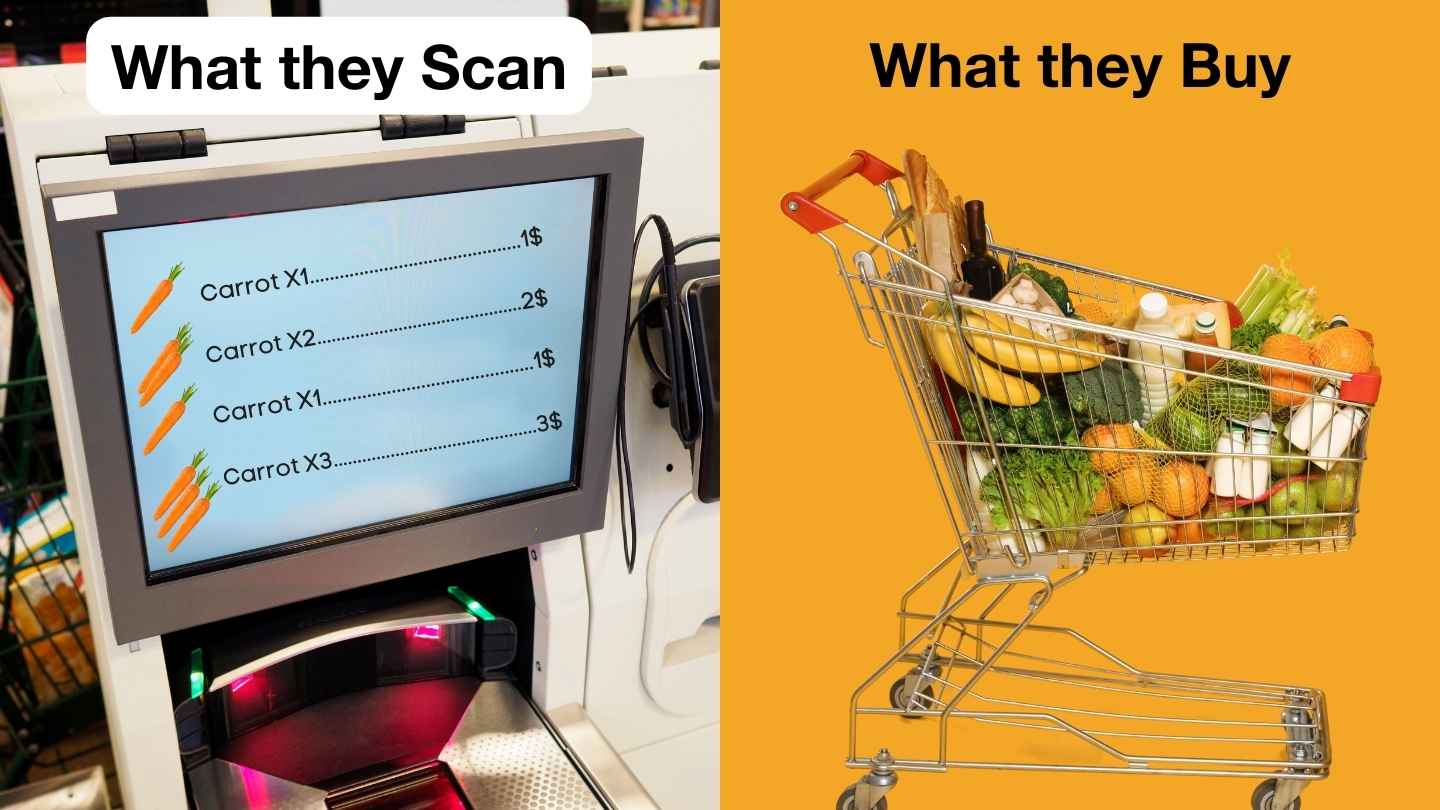The impact of employee engagement on shrink at self-checkout
Discover how employee engagement and leading Ai analysis can help reduce shrinkage in self-checkout systems. Learn how proactive strategies enhance security, improve customer experience, and boost profitability in the retail industry.
Reducing losses and enhancing customer experience
Employee engagement is a critical factor in the success of any retail business, and this holds true from entry to self-checkout. Self-checkout has become increasingly popular in the retail space as it offers convenience to customers and cost-saving benefits to businesses in the form of labour hours. However, with the rise of self-checkout comes the challenge of shrinkage, which in the case of self-checkout translates to the loss of inventory due to theft, fraud, or other human errors. In this blog, we will explore the significance of employee engagement at self-checkout how it impacts shrink and how proactive engagement strategies can help reduce losses while enhancing the overall customer experience.
Understanding shrink in self-checkout:
Shrinkage is pervasive in the retail industry, and self-checkout systems are a huge pain point in this area. While self-checkout can streamline the shopping experience, it also presents a new vulnerability for loss. Some of the most common factors contributing to shrink in self-checkout include:
- Deliberate theft “Carrot Trick” Where customers deliberately miss scan items with incorrect barcodes in order to pay reduced prices as “Carrots” as the heading suggests a popular pick because of their low cost per weight.

- Deliberate theft “Skip- Scanning”- Scanning only some of the items in the cart likely scanning cheaper items and putting more expensive ones directly in the bag.
- Deliberate theft “Bee Line”- This might not be an industry-accepted term, but this is what we refer to when a shopper takes his cart or items and goes directly through self-checkout to the exit
- Human Errors: Mistakes happen, and customers may honestly forget to scan items which once again results in a loss for retailers, however, this may be significantly less frequent and overall, less costly than other incidents.
Employee engagement as a shrink-reduction strategy
Proactive employee engagement is a practical approach to combat shrinkage in general and this applies well to self-checkout areas. Let us explore some ways in which employee-customer engagement can be fostered and its impact on shrink reduction:
1. Training and education:
Comprehensive training ensures employees are familiar with self-checkout systems and their potential risks. Employees should be equipped to detect and prevent fraudulent activities by providing regular and detailed training sessions, being made aware of the various tactics employed by thieves and following the necessary procedures to deter this behaviour.
2. Setting expectations and incentives:
Clearly defining expectations and performance standards regarding shrink reduction is crucial. Incentivizing employees based on shrink metrics can further motivate them to engage in loss prevention efforts actively which can be something as simple as customer engagement. This reward structure can take a variety of forms, but the hard part is tracking employee efforts.
3. Enhanced customer service:
When employees actively engage with customers during self-checkout transactions, it improves customer experience and acts as a deterrent against theft. Greeting customers, offering assistance, and being available for support can create a positive shopping environment, reducing the temptation for dishonest behaviour.
4. Technology and surveillance:
Utilizing technology and surveillance systems can complement employee engagement efforts. Implementing video analytics and monitoring tools can assist in identifying suspicious activities and verifying transactions.
The role of predictive & trajectory analysis via computer vision
Predictive analysis involves using historical and real-time data to identify patterns, trends, and anomalies. Predictive analysis can help retailers identify areas of vulnerability and prompt changes such as staff placement and store layout to combat those issues.
Employee engagement
Movement analysis leverages computer vision technology to track and analyze the movements of customers and employees at self-checkout stations. The system captures and interprets video data allowing for advanced analysis of interactions between customers and employees to not only drive compliant customer behavior but also provide a better overall shopping experience.
Conclusion:
Employee engagement plays a vital role in curbing shrinkage at self-checkout systems. By fostering a culture of vigilance, providing comprehensive training, setting clear expectations, and offering support, retailers can create a shrink-resistant environment while enhancing the customer experience. Proactive engagement strategies and technology-driven solutions are powerful defences against shrinkage, boosting profitability and building a trustworthy brand image in the competitive retail landscape.
